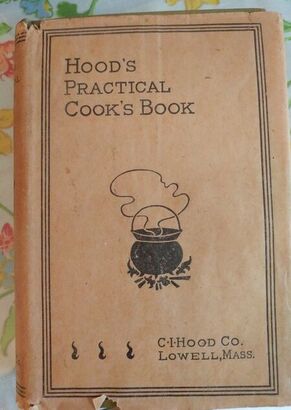 Hood's Practical Cook's Book from 1897 is one of my favorite 19th century cookbooks in my collection. It's really quite small and could easily fit in an apron pocket. My copy has the original dust jacket, which is nice. Published by C.I. Hood & Co., a Victorian patent medicine company, the cookbook is interspersed with advertisements for Hood's products, especially their famous sarsaparilla extract. I made the very successful Buttermilk Cake from this cookbook previously, and I'd been wanting to make Dutch Apple Cake for a while. Touted as a "tea cake," it was essentially a biscuit with sliced apples stuck in the dough. We've been trying to cut back on sweets, and this recipe has absolutely no sugar in it - neither for the biscuit nor on the apples, so it seemed like a perfect dessert. I also made it for our 3 year wedding anniversary. Normally we go away someplace fun, but obviously not this year, so I made my favorite roasted vegetable French lentil bowls and we had this for dessert. Dutch Apple Cake Recipe (1897)The original recipe reads: "One pint of flour, two teaspoons of baking powder, one-half teaspoon of salt, and a generous tablespoon of butter rubbed in with the flour and powder. Beat one egg lightly, add it to three-fourths of a cup of milk, and mix with the flour; pour into shallow pans and spread one-half an inch thick. Stick into the touch three rows of one-eighth sections of apples and bake one-half hour. Serve as a tea cake, or as dessert, with sugar and cream, or sauce." Here's how I translated the recipe: 2 cups flour 2 teaspoons baking powder 1/2 teaspoon salt 1 1/2 tablespoons butter 1 large egg 3/4 cup whole milk 3 smallish apples (I used Gingergold - a sweet, slightly mealy, early apple) Combine flour, baking powder, and salt and whisk to combine. Cut butter into small cubes and smush with fingers, mixing into the flour, but leaving largely intact. Whisk the egg into the milk, and pour into the flour mixture. Toss with a fork until a dough forms, kneading/folding lightly to get the rest of the flour and spread the butter, then pat into a greased quarter sheet pan. Quarter apples, core, and cut each quarter in half (to make the eighth!). I did not peel mine, and pressed into the dough as best I could on their sides. I had a few slices left over. Bake at 350 F for about 30-40 minutes until the biscuit is lightly browned and the apples are tender. Serve with sweetened whipped cream (and liquid cream, and maybe some maple syrup). If you read the recipe, it seems pretty straightforwardly biscuit-y. But when you get to the middle, it says, "pour into shallow pans and spread one-half an inch thick." Sadly, my dough did NOT pour, and in fact, I had to knead it a bit to get the flour mixed in. If I had been paying closer attention, I would have added a little more milk, but I didn't! So I followed the recipe exactly. The biscuits were also a BIT flat tasting and dry - I would add a teaspoon or so of sugar and more milk (at least a cup), which I think would make something a little more batter-ish, which would presumably rise around the apples a little more. I would also space the apples closer together as they provide the only sweetness. In summation, certainly not a terrible recipe, but not great either. Basically a plain biscuit with baked apples on top. Sadly, this one gets labeled a fail! But I am going to try it again - I might also add some sweet spices like cinnamon or cloves to the biscuit dough and see if that makes a difference. And maybe chop the apples into smaller chunks - not as pretty, but easier to eat. Have you ever tried a recipe and had it fail in some way? Share your trials and tribulations in the comments! The Food Historian blog is supported by patrons on Patreon! Join us for awesome members-only content like free digitized cookbooks from my personal collection, e-newsletter, and even snail mail from time to time!
4 Comments
Anna Katharine Mansfield
10/12/2020 03:22:28 pm
I think it's interesting that the recipe suggests serving it with 'sugar and cream, or sauce.' I've noticed in historic cookbooks that there's often a mix-and-match feeling, and assumed it was because cooks couldn't reliably source as many ingredients as we can with modern grocery stores. So you'd get multiple recipes for cakes, followed by multiple recipes for toppings, and you could put something together based on your cupboard ingredients. Is that a sound deduction?
Reply
10/14/2020 12:56:16 pm
Giving cooks the leeway to make decisions or alterations based on available ingredients is certainly one reason! But I think it's also about personal preference, time allowances, and avoiding monotony. Some families may prefer to eat their "cake" doused in cream and sugar (which takes no additional time), others may prefer a hard sauce like you would serve with a steamed pudding (which takes some advanced planning).
Reply
Kathy
10/1/2022 10:30:14 am
I’ve just pulled out my Mom’s old Dutch Apple Cake recipe and I am baking it now, but using blue or damson plums instead of apples. I recall that this was a slightly dry cake. Here is her recipe … 2 cups flour, 4 tsp baking powder, 1/4 cup lard (I’ve substituted butter), 3/4 cup milk, 1/4 cup sugar, 1 tsp salt, 1 egg. Sift together dry ingredients and work in lard. Beat eggs and milk. Add dry ingredients and mix. Put into a greased pan. Cover with sliced apples. Sprinkle with cinnamon and brown sugar then dab with butter. Bake at 400° for 30 minutes.
Reply
clara
5/14/2024 01:06:11 am
I just made this! When you're adding the flour and the milk, you want to bounce back and forth from pouring in a little bit of flour, then mixing, and then pouring a little bit of milk in and mixing. Your cake batter consistency will turn out much better if you do this.
Reply
Your comment will be posted after it is approved.
Leave a Reply. |
AuthorSarah Wassberg Johnson has an MA in Public History from the University at Albany and studies early 20th century food history. Archives
July 2024
Categories
All
|
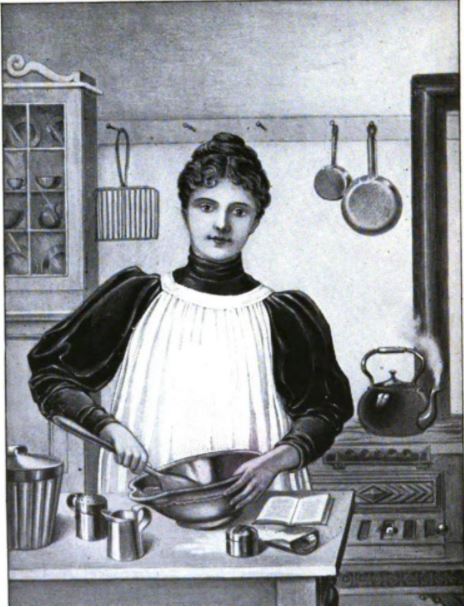
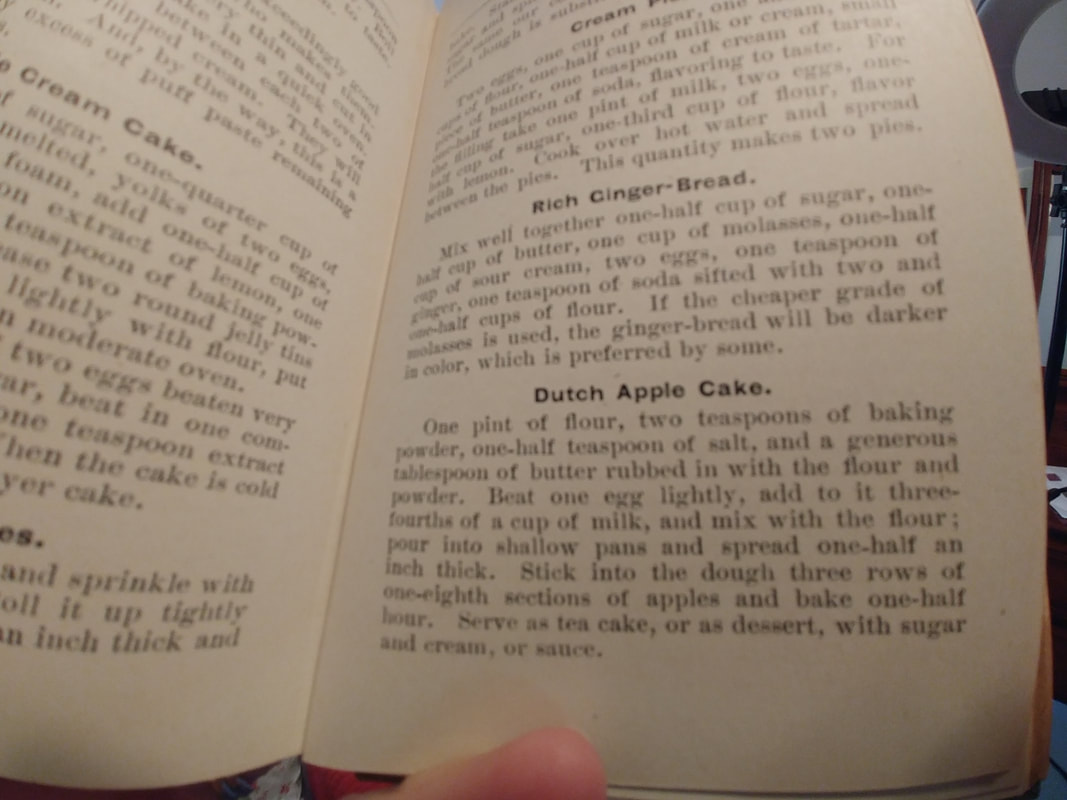
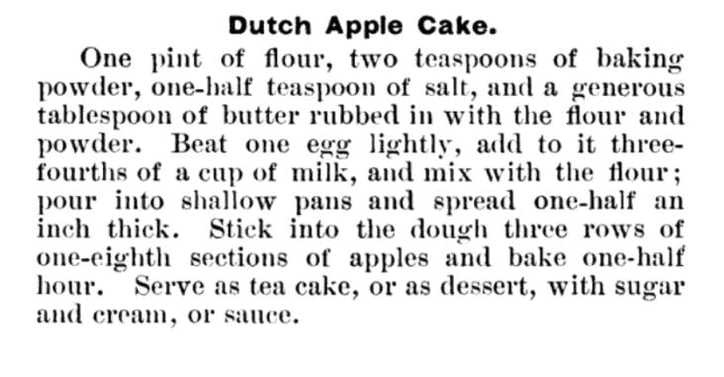
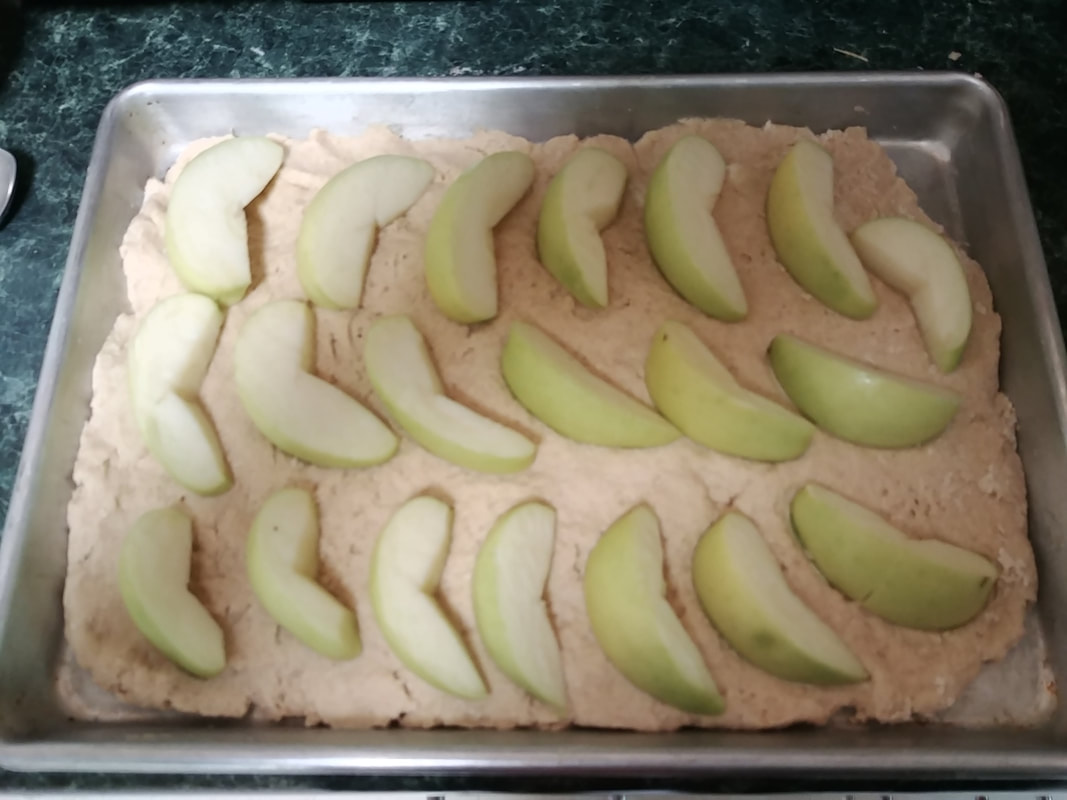


 RSS Feed
RSS Feed